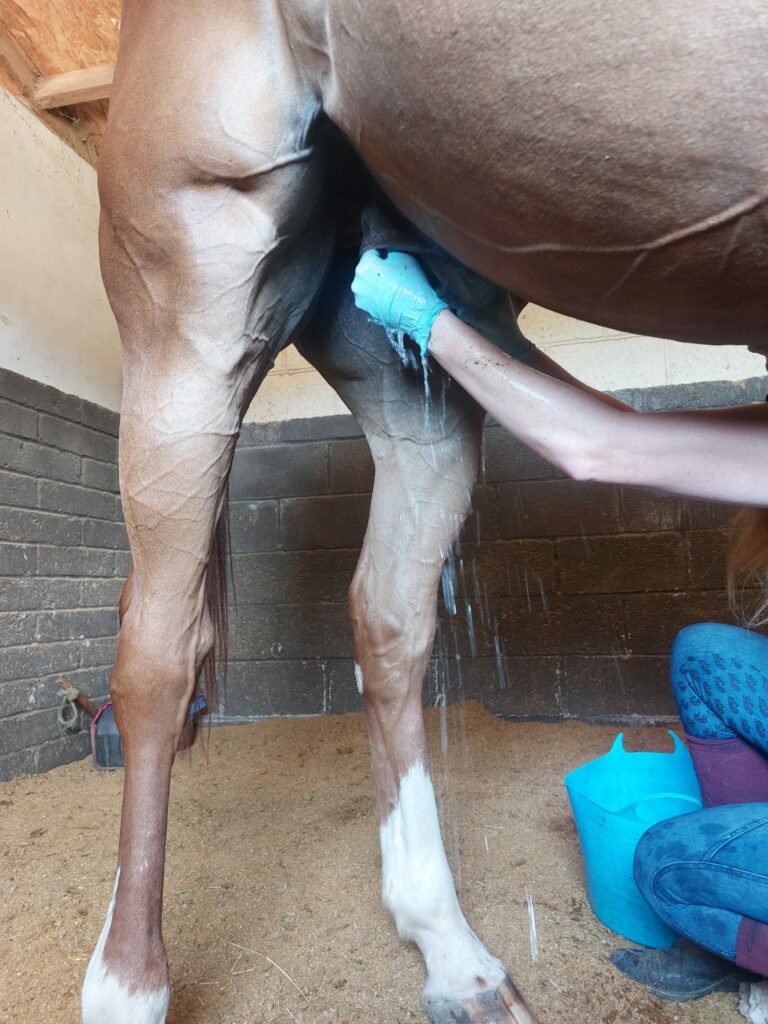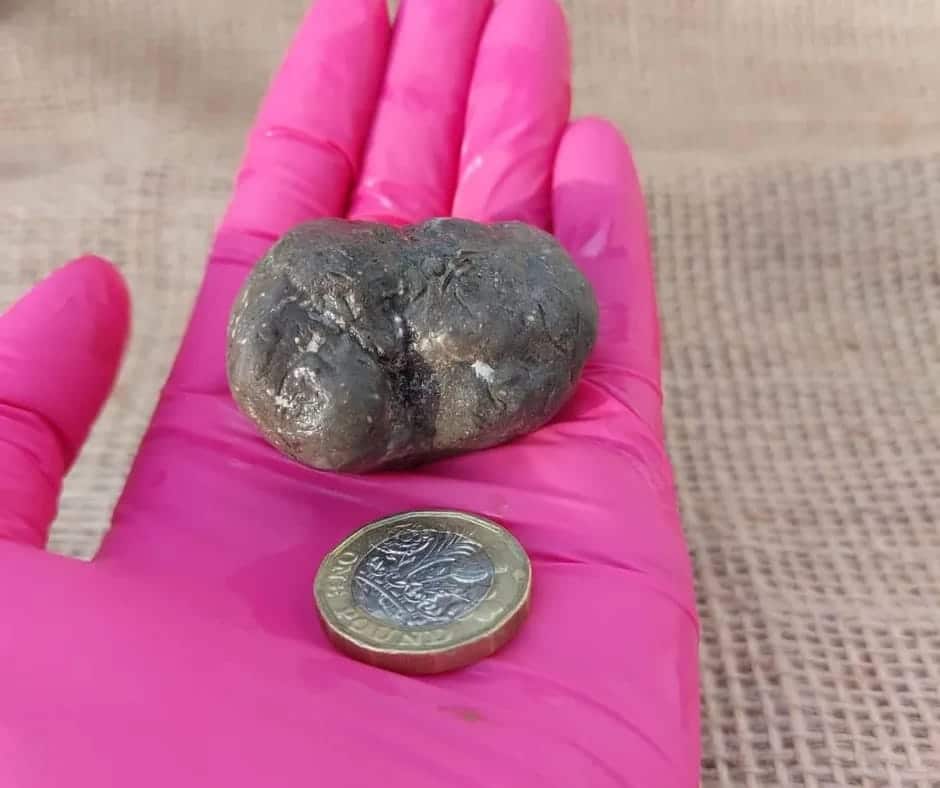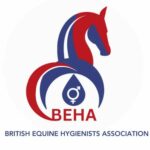Behaviour, Featured, Veterinary
Talking all things equine hygiene – the boys
The Horse Hub asks, why is equine hygiene so important?
There are many reasons equine hygiene is important – if you have a mare and think there is nothing you need to do or, that a quick wipe between the teats every now and again is sufficient – think again!
If you have a gelding and everything looks clean with no visible ‘cornflakes’ or smegma build up, then that area is best left alone – think again!
The Horse Hub had a day out with two very experienced professional equine hygienists, Allie Macleod The Horsebox Spa and Kat Seeman Southern Equine Sheath Cleaning to find out why we need to look after our horses’ most personal places.
In the first of our two-part series on equine hygiene we will look at the case for the boys – geldings or stallions, they both need regular hygiene checks.

What might be a sign that your gelding needs a hygiene check?
Some of the more common signs are:
- Tail rubbing
- Discomfort while urinating
- Spraying while urinating (potential sign of a bean)
- Kicking up at sheath and being irritated
- Swollen sheath
- Progressive behavioural changes, both on the ground and/or under saddle
- In extreme cases, colic-like symptoms, or seeming ‘girthy’
- Muscle tension around the loins and croup
Why do geldings need hygiene checks?
Regular sheath cleans and hygiene checks are recommended to remove any uncomfortable hard and sharp smegma, penile crust and/or equine penile beans.
During the check a professional equine hygienist will be able to detect any abnormalities within the sheath, which will be reported to the owner to discuss with their vet.
A common question is ‘why don’t horses in the wild need their sheaths cleaned?’ The answer is simple, in the wild there aren’t many geldings! When we domesticate horses and castrate them, their penis is no longer used as nature intended with the stallions ‘self cleaning’ when they cover mares.
Additionally, the management and environment of domesticated horses contributes to smegma build up, for example when stabled horses come into contact with dusty bedding or, are ridden in sand arenas.
What happens during a visit?
Taking time to ‘meet and greet’ the horse with a little scratch and a quiet ‘hello’, is an important first encounter. This will help the hygienist gauge how the horse might react to the process and, allow the horse to have a good sniff to understand they are meeting a friend.
Equine Hygienist Kat Seeman says: “Before putting on a glove we do a ‘touch test’ of the area to assess the horse’s reaction and from there, we can decide how to proceed. Most horses fine, but for the more sensitive horses, we will adapt to their needs at this point, so we can work with them safely, calmly and positively.”
Once the horse’s acceptance is established what happens next?
- A water-based lubricant is used to soften and loosen the smegma and penile crust, so it can be removed comfortably. A check for an equine penile bean is also made and if present, it will be removed.
- A bean is often found at the tip of the horse’s penis. It is an accumulation of skin cells, fat cells, dust and urine, that form into a hard mass. If left unfound they can in some cases, they grow very large causing difficulty urinating and the sheath to swell.

- Using clean warm water, the internal sheath and penis is washed, removing any chunks of built up smegma.
- Once everything is washed, a large syringe is used to flush clean warm water through the internal sheath cavity, removing the last of the broken-up pieces of smegma and dirt, leaving it clean and comfortable.
- It is recommended that a gelding with not obvious problems should have a routine hygiene visit every 6 -12 month.
Can I check my gelding myself?
Yes, if they allow, you can certainly feel for a bean, this is located at the tip of the horse’s penis, in a small pocket above the horse’s urethra.
A bean is a build-up of skin cells, fat cells, dust and urine. If a bean is present; it will feel hard in this area – usually it should be soft and fleshy.
If you clean your gelding yourself, be very careful not to do this too often and, do not use anything other than a water-based lubricant. Cleaning with strong products could kill the good bacteria and encourage bad bacterial growth or, possibly cause the skin to dry out or become inflamed or cracked, possibly leading to an infection.
THE BRITISH EQUINE HYGIENISTS ASSOCIATION
 Did you know there is now an organisation to ensure whoever you have out to make sure your horse’s personal places are clean and comfortable, is working to the highest professional standards?
Did you know there is now an organisation to ensure whoever you have out to make sure your horse’s personal places are clean and comfortable, is working to the highest professional standards?
The British Equine Hygienists Association is a consortium of equine hygienists who are scrupulous about bio security and hygiene standards, are fully insured and, undertake CPD to continue their learning and understanding of our horses most sensitive areas. Find them here
